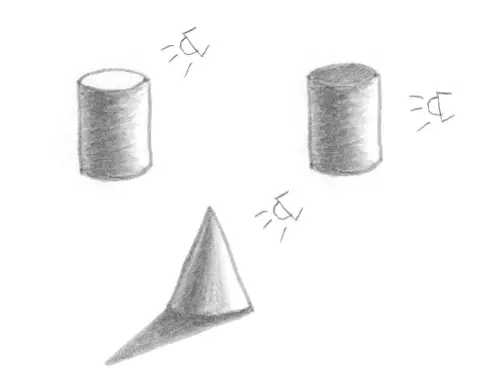
Practice shading other simple shapes using the value scale. Spheres and cylinders will help you with organic shapes later, like animals and humans. Cubes and pyramids will help you when shading non-organic things like buildings and furniture. It's also very important to observe shadows in real life. Take simple objects, like balls and toilet paper rolls, and place them next to a lamp. Study how the light interacts with the objects and creates shadows. Then draw the objects and shadows. After practicing with multiple objects, shading will become more intuitive.
Another exercise to do is to move your light source around to see how that changes the shadows. For this second cylinder, the light source is lower, so the top side would be in shadow as well. The cast shadow would also be longer. The lower the light source, the longer the cast shadow.
ractice shading a variety of shapes. Make them harder as you progress. Cones will also come in handy when shading organic objects later. There really is no special trick. If you want to get better, you just have to practice!
Exercise 3: Shade more complex objects that are made up of simple shapes.
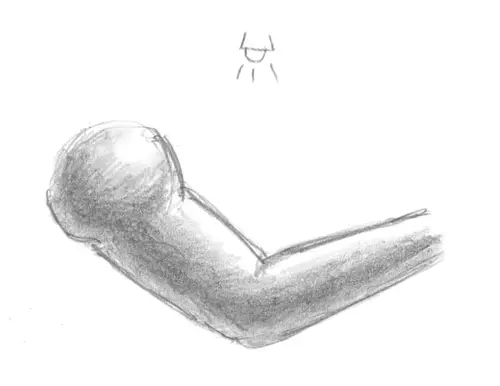
Draw a human arm using basic shapes and apply the shading method to the arm. Use a sphere for the shoulder and a couple of cylinders for the arm. Darken the outline of the arm and erase the inside. Add your light source at the top.
Now shade each section of the arm individually based on the light source at the top. Because the light source is at the top, the core shadows will be at the bottom. The lightest parts, or highlights, will be at the top, so leave those areas blank. As you shade the arm, attach the core shadows from each section to each other so that they become a single long shadow. Make the transition from light to dark smooth and gradual. Don't forget the reflected light at the bottom!
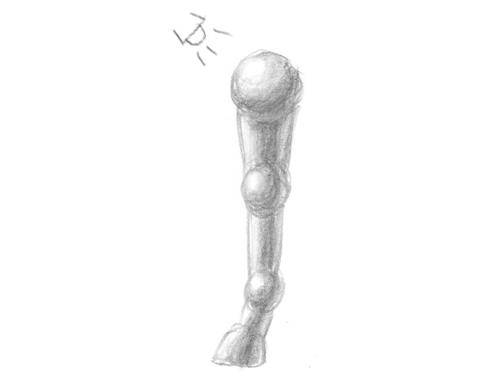
Practice this technique with a variety of limbs, like a horse leg, for example. A horse leg is basically made up of spheres and cylinders too. Break down any object into simple shapes so that it's easier to visualize the shadows. This may be a bit challenging at first, but it'll get easier with practice. After practicing with simple shapes, you can eventually move on to more complex objects.
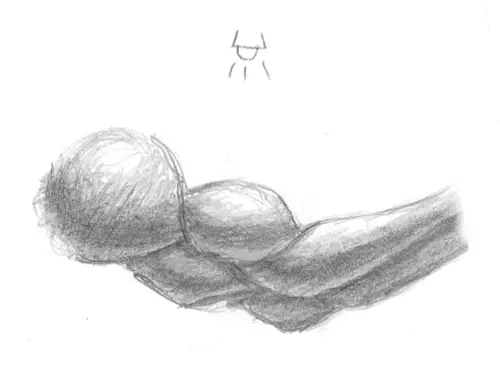
When you move on to more complicated objects, you'll realize that they're just made up of smaller , simpler shapes. If we take the arm at the top and give it more muscle definition, the same rules apply to the smaller shapes. The light source is at the top, so all the shapes on the arm should reflect accordingly.
Knowing muscle anatomy will help you draw a more realistic-looking arm and will help you shade it properly. The core shadow should be near the bottom of each individual shape. The reflected light should also be near the bottom edge of each shape to make it more three-dimensional. The highlight of each shape should be at the top. But tone down the brightness of the highlight the farther down that shape is.
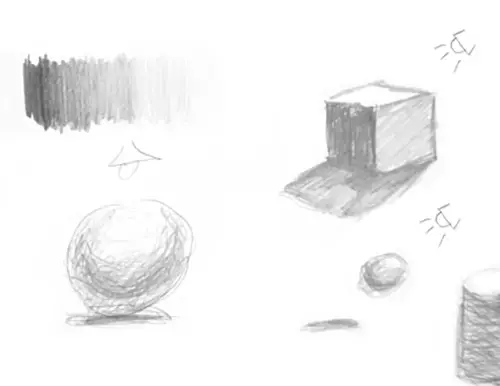
Remember that for shading, first learn to control the pressure of your pencil. Practice that by drawing smooth, gradual value scales. Then apply the gradual shading to simple objects. Use real life objects and observe how light interacts with them. Eventually move on to shading more complex objects. But it's very important to do the value scale exercises first. Above all, you have to practice! It might not be perfect at first, but in time you'll get better.
Thanks for visiting! Subscribe to the How2DrawAnimals YouTube Channel for a new tutorial every Saturday.
To learn how to draw popular cartoon characters, visit EasyDrawingTutorials.com.
RELATED TUTORIALS
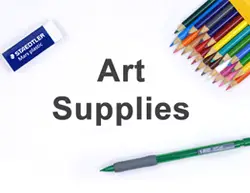 |
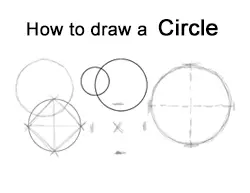 |







